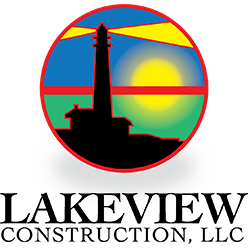According to the Copernicus Climate Change Service, the daily global average temperature on July 22, 2024, reached an all-time record high. Put simply, we just witnessed the hottest day in the recorded history of planet earth.
It is more than just the building and construction industry that feels this impact. It influences nearly every facet of our lives – from potential health risks and energy consumption to stress on the power grid and wildfires.
Excessive heat also highlights the importance of creating homes and buildings with high-performance materials that will stand the test of time and the elements.
Siding is one of the most common exterior materials in construction, and selecting industry-leading materials is becoming more critical to the longevity of our built environment, especially when considering how hot 21st-century summers have been.
The Capstock: More Sun. Less Fading.
For siding to withstand the sweltering summer sun, it needs to carry some form of UV resistance. More inexpensive siding materials (or those that require repainting to look new) can suffer from fading after prolonged exposure to the sun’s harsh rays. In fact, this can happen relatively quickly (in as little as five to seven years) for certain materials such as engineered wood and fiber cement. This fading affects the visual appeal of a building and necessitates frequent maintenance and repainting if owners want the siding to look new.
This increases both the initial investment and the ongoing cost and effort required for maintenance, thus raising the total cost of ownership for the product. For light commercial structures, particularly those that welcome guests (restaurants, retail stores, hotels, or medical offices), maintaining curb appeal is vital to public perception of the business. Faded siding can make a poor impression.
Composite sidings are providing construction professionals and business owners with a solution to this challenge because they are engineered with UV resistance in mind. In fact, materials such as Everlast siding are extruded with a 100% acrylic capstock that provides superior fade resistance, ensuring that the color of the building remains vibrant and true over time.
Ultimately, all materials fade to some degree, but traditional siding materials tend to fade much more quickly compared to Everlast siding. And, unlike materials with painted surfaces that may require annual touch-ups, Everlast siding maintains its color integrity for decades, regardless of the intensity of the summer sun.
The Substrate: Ambient Temperatures vs. the Effects of Solar Radiant Heat
Composite siding substrates must be designed to withstand both ambient temperature and solar radiant heat. Ambient temperature refers to the overall temperature of the surrounding air, while radiant heat from the sun is the direct heat absorbed from sunlight. When siding is exposed to solar radiant heat for a prolonged period of time, the substrate absorbs this heat, and the temperature of the exterior cladding system rises significantly. When it comes to lesser-performing siding materials, heat buildup can be a real issue.
If the temperatures exceed a certain threshold, (typically around 180+ degrees Fahrenheit for long periods of time) it can begin to break down the material composition, including composites. This can make some exterior claddings more pliable, resulting in warping, distortion, and oil canning, particularly in thinner materials such as vinyl, rigid PVC, cellular PVC, and polypropylene. Darker-colored siding (painted, coated, or capped) typically absorbs heat more quickly and is especially vulnerable. Sunny regions in the southern, southwestern, and western United States, or areas at higher elevations such as Colorado are more susceptible to extreme heat conditions. However, because composites are typically much thicker and have a more robust material composition than vinyl and polypropylene claddings, the heat buildup is slowed, and they can resist the brutal summer sun and high temperatures for longer periods of time before experiencing any adverse effects.
Inorganic composite materials, such as Everlast siding, are engineered to combat these issues more effectively than cellular PVC or vinyl claddings. Due to their thickness and composition, composites take longer to absorb heat, allowing them to withstand higher temperatures and prolonged sun exposure without damage. However, in extreme conditions, composites can be affected, but their durability provides much greater resistance to the harsh effects of radiant heat.
Managing Moisture: Inorganic vs. Organic
In addition to dealing with high temperatures, summer often brings heavy rains and humidity. These conditions can lead to moisture-related problems such as mold, mildew, and rot, especially in siding materials that are not properly sealed or are prone to absorbing water. This is a key area where inorganic composites, such as Everlast siding, outperform organic composites. Organic composites, as the name suggests, contain organic materials that are vulnerable to fail if exposed to moisture. The same goes for fiber cement, engineered wood, and wood siding. While durable, it can still be susceptible to moisture issues if not maintained properly. It often requires resealing and periodic checks to ensure there are no exposed areas.
This was the case at The Residences at Atlantis Marina, a five-story, 44-unit condominium just east of downtown Boston. The building was experiencing “the worst fiber cement siding failure” that the project’s construction manager had seen in his entire career. Moisture intrusion was the culprit.
Crews removed the fiber cement entirely and replaced it with Everlast advanced composite siding because they needed a material that would stand up to the rigors of the ocean-front locale’s moisture and salty air.
Composites such as Everlast siding excel in moisture resistance. The material’s construction includes advanced moisture-resistant properties and a proprietary blend of inorganic minerals and polymeric resins that prevent water from infiltrating the material. This helps to maintain the structural integrity of the siding and prevents common problems such as warping, swelling, rotting, and decay. Thanks to the moisture resistance of inorganic composites, owners can enjoy peace of mind knowing that their exterior is protected from the damaging effects of both summer storms and high humidity. When building a new home or constructing a new one, inorganic composite sidings are a better option compared to organic composites when it comes to successfully managing the effects of water and moisture.
A Smart Investment for All-Season Protection
As we navigate through the hottest and most demanding season of the year, composite sidings are demonstrating their value for homes and light commercial structures nationwide. Through superior anti-fading properties, excellent color retention, and high moisture resistance, composite sidings are a top choice for structures to withstand all that Mother Nature brings in the summer months. Moreover, their performance ensures continued longevity and resilience throughout the winter months as well.
Ultimately, composite sidings address the many challenges associated with building envelope materials, making them a smart investment for any property.




























